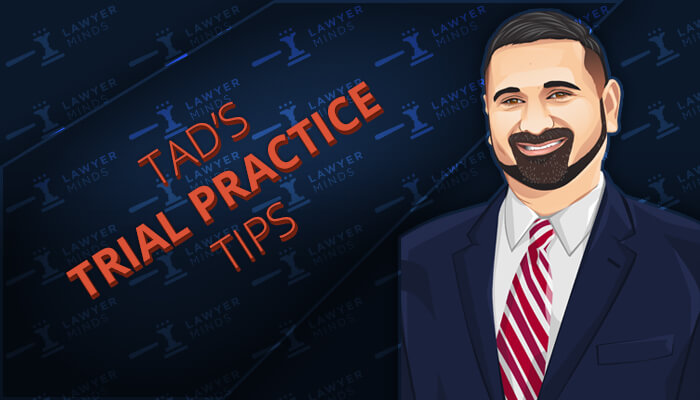Tips for Trial Attorneys Communicating With Jurors

Join me as I talk tips for upping your trial performance. I’ll cover all aspects of the trial, including jury selection, opening statements, direct witness testimony, cross-examination, closing arguments, jury instructions, and verdicts. Discussions are welcome in the comments section.
— Tad Thomas
When you consider the components of your case, opening statement, direct and cross-examination, closing, etc., it’s important to remember to think of how those elements are going to work together to make the jury understand your case.
The jury is looking to you to help them decide how to deliberate and arrive at a decision. It’s likely your client’s case will cover issues outside of their personal and professional experience, meaning they only have your presentation and their judgment to help them decide if they believe you.
To communicate with jurors effectively, you need to focus on verbal and nonverbal communication. While both are important throughout trial, you may want to focus more on nonverbal cues when it comes to jury selection. Let’s take a look at why that is.
Nonverbal Cues to Consider During Jury Selection
Nonverbal cues are important throughout a trial, but it’s most important to be aware of how you’re presenting yourself and how the potential jurors are feeling during jury selection. Jury selection gives you the chance to select the best possible jury panel for your client and lets you collect information about the jurors so you can better understand them, their motives, and how they will be likely to receive your message.
While you will undoubtedly be taking notes during jury selection, remember to pay attention to nonverbal cues, as they’re likely to tell you much more than just what the potential juror is saying out loud. Some cues the could indicate potential bias during jury selection include:
- Facial Indicators – staring at you and your client, frequent eye contact with the opposing attorney, frowning, looking to the opposing attorney or judge when answering your questions
- Body Indicators – closed posture when speaking, changes in pitch or tone, open body posture when speaking to opposing attorney, physically moving away from you while answering questions (i.e., leaning back in the chair, crossing arms)
While those are not the only bias-indicating nonverbal cues, they will give you a solid base to build on as you learn to recognize more common nonverbal indicators and what they mean. If you see a potential juror is showing signs of bias, you can focus on questions designed to draw out the bias, so you can request the prospective juror be dismissed if necessary. It is helpful to have someone other than the questioning attorney taking notes and looking for these non-verbal cues. The questioner should be focusing on the juror answering while others on the trial team watch the remainder of the panel.
Communicating With the Jury Verbally During Trial
What you say in trial and how you say it drastically affects the outcome of your client’s case. In order to connect with the jury in a meaningful way, consider the following:
- Thank the jury. Regardless of when you choose to do it, remember to thank the jury for its service. They will appreciate the acknowledgment of their time and be more willing to give your client some consideration. But ensure that you are sincere. Otherwise, jurors will see right through it.
- Simplify issues carefully. Be careful when telling jurors to “use their common sense” and other similar phrases. You do not want to sound condescending, and you don’t want jurors to feel as though you think they’re not smart enough to figure out the issues brought about at trial. If the case involves complicated issues or important terminology, provide jurors with a roadmap without insulting their intellect. It helps to use expert witnesses who are educators who can explain complex issues and concepts.
- Know your witness. Drawn-out cross-examinations will not help your client. Jurors appreciate straight answers, so remember to ask leading questions that prompt a direct response. Be careful arguing with witnesses who aren’t giving you yes or no answers. If you are asking good questions and the witness is avoiding the answer, jurors will know. You don’t have to call their attention to it. Remember to show respect for the witness and think of yourself as the “truth-teller.”
- Make sure instructions are clear. The use of jury instructions varies widely from state to state. If possible, ask that the jurors be given the questions in writing so that they can follow along as the judge reads them. If allowed, always incorporate the jury instructions in your closing argument. Talk with the jurors about each question and make a specific ask as to how you wish for them to answer.
When you consider both nonverbal and verbal communication throughout trial, you’ll be more aware of what the jury is thinking and how jurors are perceiving your message and your client’s case. If you follow the tips above, you will help the jury help you.


